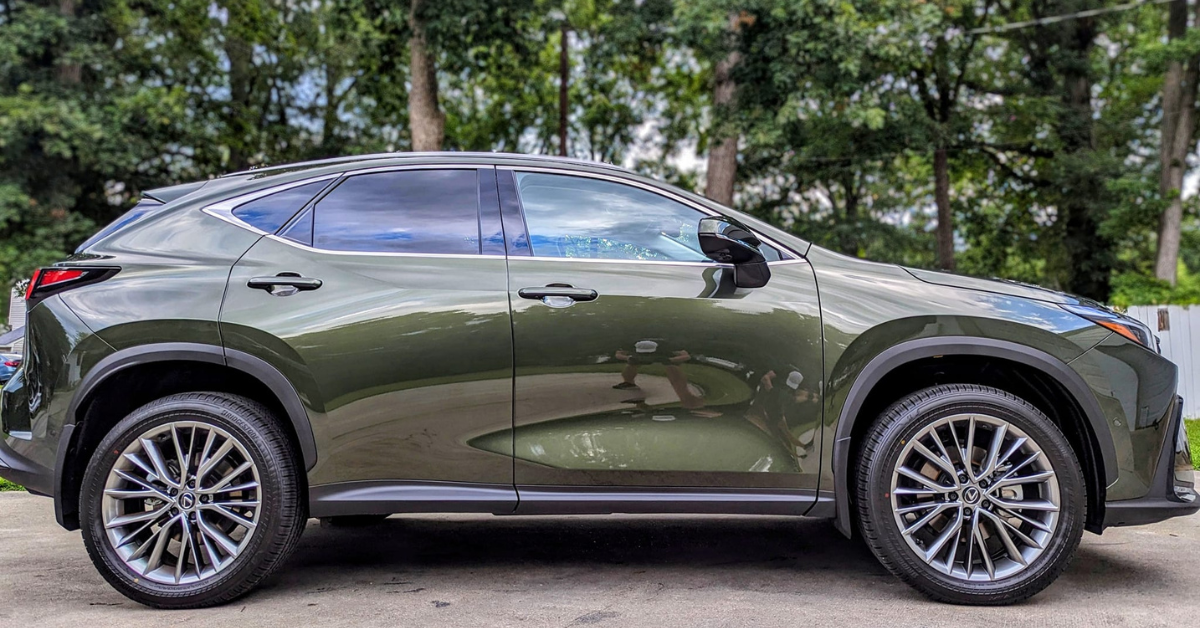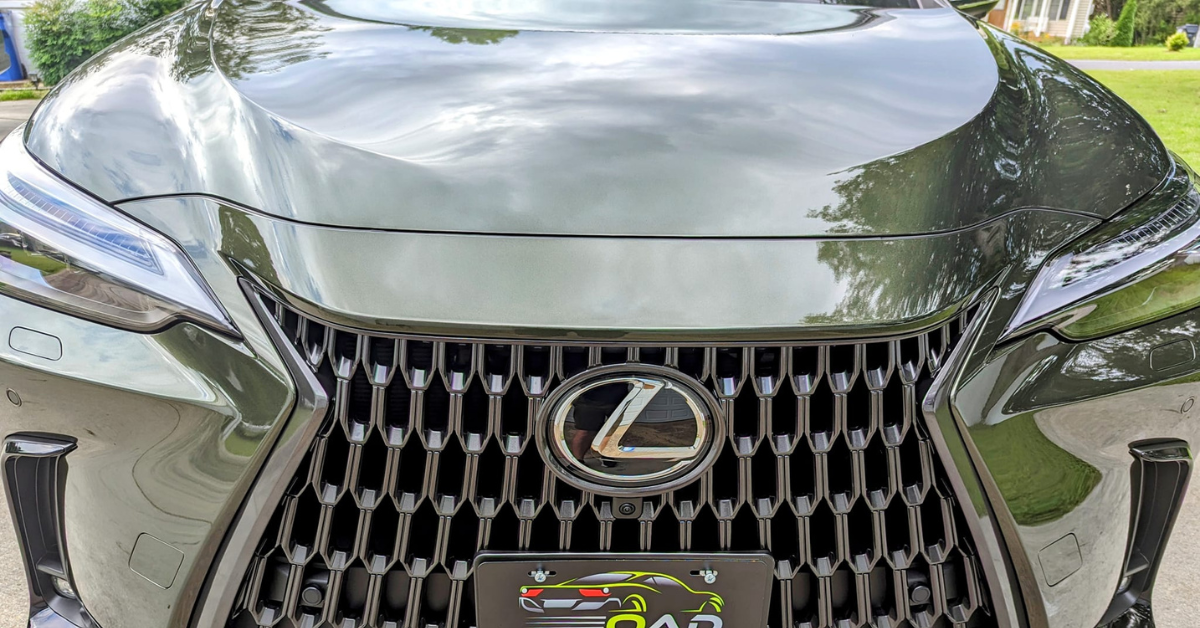
Guard your car with Paint Protection Film (PPF), a thermoplastic urethane shield. PPF safeguards against debris, swirl marks, UV rays, and more. Its layers include a high-quality top coating. The application ensures a customized fit for thorough protection. Understanding PPF usage is crucial for long-lasting safeguarding. Discover the secrets of PPF’s transparent defense technology and how it preserves your car’s aesthetics and value.
Key Takeaways
- PPF shields against road debris, rocks, bug splatter, and UV exposure for long-lasting protection.
- PPF enhances the aesthetic appeal and resale value of the vehicle.
- Installation involves precise cleaning, cutting, shaping, and bonding for full coverage.
- Regular cleaning, inspection, and professional assessment are crucial to maintaining PPF’s durability and effectiveness.
The Basics of PPF
When considering the fundamentals of PPF, it’s crucial to understand its composition and application methods for prime vehicle protection. Paint Protection Film (PPF) is a thermoplastic urethane film applied to the exterior of a vehicle to shield it from potential damage caused by road debris, rocks, bug splatter, minor abrasions, and UV exposure. This transparent film acts as a barrier between your car’s paint and the outside elements, helping to maintain the pristine look of your vehicle.
The composition of PPF typically consists of multiple layers designed to provide varying levels of protection. Underneath this layer is a clear coat that enhances the film’s gloss and resistance to yellowing over time. The adhesive layer is responsible for bonding the film to the vehicle’s surface, ensuring a secure fit that lasts.
Application methods for PPF vary depending on the brand and type of film used. Professional installers meticulously apply the film to the car’s paint, ensuring a precise fit that minimizes seams and edges. The film is carefully trimmed to fit each specific vehicle model, providing complete coverage for prime protection. Understanding the composition and application methods of PPF is essential for maximizing its benefits and safeguarding your vehicle’s exterior for years to come.
How PPF Works
Have you ever wondered how Paint Protection Film (PPF) effectively safeguards your vehicle’s exterior from various sources of damage? PPF is a transparent, urethane material that’s applied to the painted surfaces of a car. Its primary goal is to safeguard the paint from chips, stains, and other forms of damage caused by road debris, environmental factors, and everyday wear and tear. The film works by absorbing the impact energy from these hazards, preventing them from reaching the paint surface.
When a rock or other debris hits the PPF, the film’s premium properties come into play. Minor marks on the film disappear when exposed to heat, like that from the sun or warm water, due to the elastomeric polymers in the material rearranging themselves to mend the damage. This process helps maintain the film’s clarity and ensures that your vehicle continues to look sleek and well-protected.
PPF is also designed to resist yellowing or discoloration over time, keeping your car looking new for longer. Additionally, the film acts as a barrier against UV rays, which can fade and damage the paint underneath. By providing a sacrificial layer that takes the brunt of the damage, PPF helps preserve the beauty and value of your vehicle, giving you peace of mind as you drive.
Benefits of PPF
To fully grasp the benefits of Paint Protection Film (PPF), it’s crucial to explore its unmatched ability to safeguard your vehicle’s exterior. PPF acts as a shield against various elements that can damage your car’s paint, such as stones, road debris, bird droppings, and even severe weather conditions. This clear film is designed to absorb the impact of these hazards, preventing swirl marks, chips, and stains that can degrade the appearance of your vehicle over time.
One of the key advantages of PPF is its self-repairing properties. The film has the incredible ability to fix minor scuffs and swirl marks on its own when exposed to heat, providing continuous protection without needing manual intervention. This feature ensures that your car maintains a flawless finish, enhancing its overall aesthetic appeal and resale value.
Furthermore, PPF offers long-term protection against UV rays, which can lead to paint fading and discoloration. By blocking harmful UV radiation, the film helps preserve the vibrant color of your vehicle’s paint, allowing it to look newer for longer. Additionally, PPF is easy to maintain and can be washed and waxed like the rest of your car’s exterior, making it a convenient and durable solution for preserving your vehicle’s appearance.
PPF Installation Process
The PPF installation process involves meticulously applying a protective film to the entirety of your vehicle’s exterior surface. This process begins with thoroughly cleaning and preparing the surface to ensure ideal adhesion. Any existing imperfections or debris must be removed to prevent them from being trapped beneath the film. Next, the PPF is precisely cut and shaped to fit each specific area of the vehicle, including curves, edges, and complex contours.
During installation, skilled PPF installers use squeegees and heat guns to carefully apply the film, ensuring a smooth and seamless finish. The film is then bonded to the paint using specialized adhesives that provide long-lasting protection against various environmental hazards.
Moreover, the installation process requires a controlled environment free from dust and other contaminants to ensure a flawless application. Proper lighting is essential to identify any imperfections and ensure precise alignment of the film.
Maintaining PPF
Regular cleaning and inspection play crucial roles in maintaining the integrity and effectiveness of your Paint Protection Film (PPF). To ensure your PPF continues to provide top-notch protection for your vehicle, it’s essential to follow a diligent maintenance routine. Begin by washing your car regularly with mild car wash soap and microfiber cloth to prevent dirt and grime buildup on the PPF surface. Avoid using abrasive cleaners or rough materials that could potentially damage the film.
Inspect your PPF frequently for any signs of peeling, lifting, or damage. Address any issues promptly to prevent further deterioration and maintain the protective properties of the film. If you notice any imperfections or areas of concern, consult a professional PPF installer for assessment and repair.
In addition to regular cleaning and inspection, consider applying a quality sealant or wax specifically designed for PPF to enhance its longevity and protective capabilities. These products can help maintain the film’s clarity, prevent yellowing or discoloration, and provide an extra layer of defense against environmental elements.
PPF Cost and Value
Considering the investment in PPF for your vehicle, understanding the cost and value proposition is essential for making informed decisions regarding your car’s protection. The cost of Paint Protection Film (PPF) can vary depending on the size of your vehicle, the brand of film used, and the extent of coverage desired.
When evaluating the cost of PPF, it’s vital to weigh it against the potential value it offers. PPF not only safeguards your vehicle’s paint from chips, swirl marks, and UV damage but also maintains the car’s resale value by preserving its aesthetic appeal. By preventing paint damage and maintaining a flawless exterior, PPF can save you money in the long run by reducing the need for costly repaints or touch-ups.
In terms of value, PPF provides peace of mind for car owners who want to keep their vehicles looking pristine. Knowing that your car is protected by a durable film that can self-heal from minor marks and maintain its glossy finish can enhance your driving experience and pride of ownership. Ultimately, the value of PPF lies in its ability to preserve your vehicle’s appearance and protect your investment for years to come.
Summary
PPF is a high-quality technology that provides unparalleled protection for your vehicle’s paint. Its ability to resist chips, stains, and environmental damage is truly remarkable.
With a straightforward installation process and minimal maintenance required, PPF offers long-term value for your car. The cost may seem high at first, but the benefits it provides are worth every penny.
Trust in PPF to safeguard your vehicle like never before; it’s a game-changer for car protection.
At Owen’s Auto Detailing LLC, we are committed professionals specializing in auto detailing. We offer dependable and expert services throughout Chesterfield, Midlothian, and Colonial Heights.

